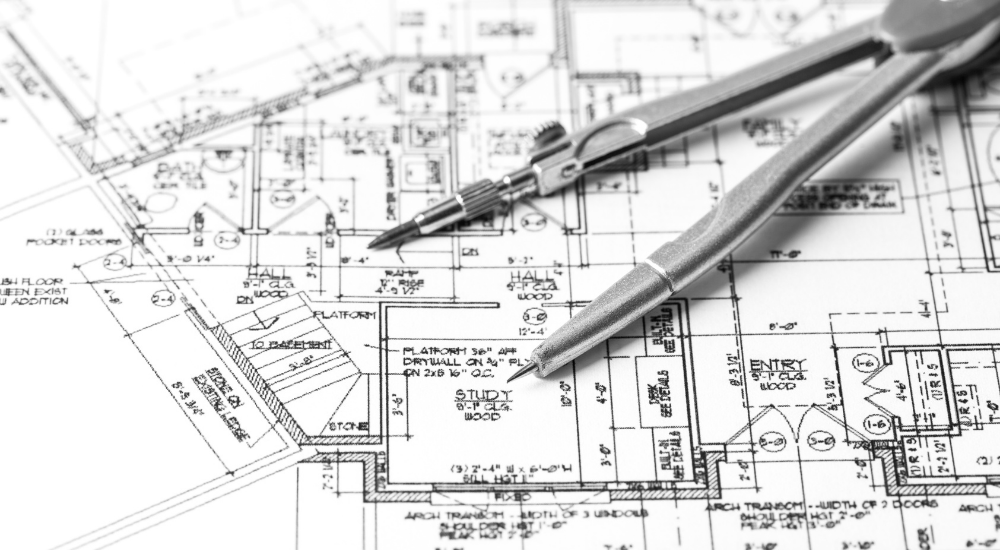Architect Collaboration Tips for Working with Consultants and Builders
Architect Collaboration Tips for Working with Consultants and Builders
Blog Article
Understanding the Diverse Job Paths Available for Aspiring Architect
As an ambitious Architect, you have a world of occupation paths waiting for you. Whether you're drawn to standard architecture or the nuances of lasting layout, there's a specific niche that lines up with your passions.
Traditional Design: Creating Buildings and Structures
Traditional design concentrates on designing buildings and frameworks that blend performance with visual charm. Your styles can mirror cultural heritage, showcasing local practices while fulfilling modern demands.
You'll create abilities in preparing, model-making, and site evaluation, permitting you to picture and interact your ideas efficiently. Involving with customers, you'll require to understand their vision and translate it into practical styles.
Moreover, building codes and sustainability methods are vital in your work, guaranteeing your frameworks are eco pleasant and secure. As you grow in your career, you'll locate chances in residential, business, or perhaps repair projects, each offering one-of-a-kind challenges. Welcoming standard architecture leads the way for a fulfilling job that pays tribute to the past while shaping the future.
Urban Planning: Forming Areas and Public Spaces
As a hopeful Architect, you can play a necessary role as a city planner, changing how neighborhoods interact and work. By using neighborhood interaction techniques, you'll ensure that homeowners have a voice fit their atmosphere. Plus, integrating sustainable style concepts will certainly aid create rooms that not only satisfy today's demands however additionally safeguard the future.
Function of Urban Planners
While many could consider engineers as the sole enthusiasts behind structures, metropolitan organizers play a necessary role fit the wider landscape of areas and public areas. They examine land usage, zoning laws, and community requires to create lasting environments that enhance quality of life. By working together with numerous stakeholders, you'll aid develop parks, transportation systems, and houses that advertise social communication and ease of access. Urban organizers also concentrate on ecological factors to consider, making certain that developments incorporate environment-friendly rooms and assistance biodiversity. Your knowledge in spatial design and neighborhood dynamics enables you to visualize future growth while preserving cultural heritage. In this vital function, you'll directly influence just how individuals experience their environments, making every task a possibility for favorable adjustment.
Neighborhood Engagement Strategies
Reliable community engagement methods are essential for metropolitan organizers to assure that the voices of locals are heard and valued in the preparation procedure. To foster meaningful dialogue, you must focus on open online forums and workshops where community members can express their ideas and issues. By proactively paying attention and incorporating feedback, you'll create spaces that reflect the neighborhood's needs, ultimately leading to more sustainable and effective urban atmospheres.
Sustainable Design Principles
When creating urban spaces, including sustainable layout principles is crucial for creating atmospheres that prosper both environmentally and socially. You need to begin by concentrating on power effectiveness, using materials that decrease waste and promote recycling. Consider integrating eco-friendly spaces, like parks and gardens, to boost biodiversity and enhance air high quality. Advertising walkability and public transportation can minimize dependence on automobiles, fostering a healthier area.
Creating with water preservation in mind is likewise key-- consider rainfall yards and absorptive surfaces to handle stormwater. Involving neighborhood members throughout the planning procedure assurances that the areas you create satisfy their needs and motivate social communication. By welcoming these concepts, you'll contribute to lively, sustainable metropolitan landscapes that benefit every person.

Landscape Architecture: Creating Lasting Exterior Atmospheres
As you explore landscape style, you'll discover essential layout principles that create attractive and practical outdoor areas. Sustainable methods play an important role in ensuring these atmospheres flourish while minimizing ecological effect. And also, you'll discover a range of career chances that allow you to make a genuine difference in exactly how individuals interact with nature.
Layout Principles in Landscape
Understanding design principles in landscape architecture is necessary for developing lasting outside atmospheres that harmonize with nature. You'll need to consider elements like proportion, range, and equilibrium to assure your layouts feel natural and welcoming. Additionally, pay interest to seasonal adjustments, creating with products that complement the surroundings year-round.
Sustainable Practices Overview
Lasting practices in landscape architecture not just concentrate on aesthetic appeals however also focus on environmental health and source preservation. By incorporating indigenous plants, you improve biodiversity and reduce the demand for chemical plant foods and pesticides. Carrying out effective irrigation systems assists preserve water and lessens overflow, securing nearby ecosystems. You can make areas that promote dirt health and wellness, such as exercising and making use of natural materials permaculture concepts. Furthermore, integrating eco-friendly framework, like rain yards and porous sidewalks, aids in stormwater monitoring and minimizes urban warm. When you create outside settings with sustainability in mind, you add to a healthier world and give spaces that cultivate neighborhood link. Inevitably, these methods guarantee your styles profit both individuals and the environment for years ahead.
Profession Opportunities Expedition
With a strong structure in sustainable practices, landscape style provides a selection of career paths that permit you to make a significant effect on the environment. Urban coordinators often work together with landscape engineers to create environment-friendly areas in urban settings, enhancing city livability. If you're enthusiastic concerning education and learning, consider coming to be a landscape design educator, inspiring future generations.
Sustainable Style: Focusing on Eco-Friendly Practices
As you explore your job in architecture, welcoming eco-friendly methods can establish you apart in a competitive area. Lasting style concentrates on creating structures that decrease environmental impact while boosting resident wellness. By incorporating sustainable products, energy-efficient systems, and sustainable building methods, you'll add to a greener future.
Begin by obtaining understanding of green qualifications like LEED or BREEAM, which can bolster your credentials. Take into consideration how all-natural light, ventilation, and thermal effectiveness can enhance layout. Collaborate with engineers and environmental professionals to innovate services that minimize waste and preserve sources.
Do not neglect the importance of neighborhood participation-- interesting neighborhood stakeholders can inspire styles that balance with the setting. As customers significantly focus on sustainability, your expertise in environmentally friendly methods will not only draw in projects however likewise satisfy your enthusiasm for accountable design. Welcome this essential aspect of the profession, and watch your profession thrive.
Historic Preservation: Safeguarding and Restoring Cultural Heritage
While you start on your building journey, consider the important role of historic conservation in maintaining our social heritage. This field concentrates on the protection and restoration of considerable buildings, sites, and frameworks that tell the stories of our past. By participating in historical conservation, you'll assist safeguard the architectural heritage that shapes community identity.
As a historic conservation Architect, you'll assess historical importance and evaluate the problem of structures. You'll work closely with guardians and historians to assure genuine restoration methods are used. This profession course enables you to blend imagination with research study, enabling you to create remedies that appreciate initial products and workmanship.
Your work not just contributes to sustainability by recycling existing buildings yet additionally fosters a feeling of satisfaction within neighborhoods. Accepting this course will certainly aid you end up being a guardian of history, preserving the stories and aesthetics that improve our lives.
Interior Style: Enhancing Indoor Spaces
Historic preservation and indoor design both share a dedication to boosting the built setting, however they concentrate on different aspects. While historic conservation stresses maintaining a structure's historic and social worth, interior architecture zeroes in on enhancing interior rooms for functionality and looks.
As an ambitious Architect, you'll locate that indoor architecture allows you to blend imagination with technological skills. You'll create areas that not only look great but likewise advertise convenience and performance. This area entails understanding just how light, shade, and materials connect within a space, influencing state of mind and usability.
You'll deal with different projects, from domestic homes to industrial workplaces, webpage guaranteeing that each environment satisfies the needs of its occupants. By focusing on user experience, you can transform insides into inspiring and practical spaces, making a considerable effect on how people connect with their surroundings. Embrace the opportunity to enhance interior settings and form the method individuals work and live.
Industrial Design: Combining Capability With Aesthetic Appeals
Commercial layout plays an essential duty in developing products that perfectly blend aesthetic appeals with performance, ensuring that what you make use of everyday is not only aesthetically appealing but additionally functional. As an aspiring Architect, you could engage yourself in this area, focusing on designing every little thing from furniture to customer electronics. Your job includes recognizing individual needs, products, and manufacturing procedures, allowing you to develop ingenious solutions that enhance day-to-day experiences.
In industrial style, you'll typically work together with marketing experts, suppliers, and engineers, guaranteeing that your layouts are not just stunning however likewise viable. You'll learn to balance kind and feature, focusing on usability without compromising design. By refining your skills in mapping out, 3D modeling, and prototyping, you'll be well-appointed to bring your ideas to life. This profession path offers a dynamic environment where creative thinking satisfies usefulness, making it a rewarding selection for designers interested in shaping the products of tomorrow.
Frequently Asked Questions
What Educational Qualifications Do I Required to Become an Engineer?
To come to be an engineer, you'll require an expert degree in style, commonly a Bachelor's or Master's. Additionally, you'll need to complete an internship and pass the Architect Registration Examination to practice legally.
Exist Certification Needs for Various Architectural Career Paths?
Yes, there're accreditation requirements for numerous architectural courses. Architect. You'll need to pass tests, full teaching fellowships, and in some cases seek specialized training, depending upon your picked focus, like landscape design, urban layout, or historic conservation
What Software Abilities Are Important for Architects Today?

How Can I Gain Practical Experience While Studying Style?
You can acquire practical experience by interning at building firms, taking part in layout competitors, volunteering for neighborhood projects, or teaming up with classmates on real-world jobs. These opportunities enhance your abilities and build beneficial look at this website connections in the market.
What Job Opportunities Exist Outside Conventional Style Firms?
You can explore different job chances outside typical style firms, like city planning, interior decoration, landscape architecture, building and construction administration, property advancement, or perhaps roles in sustainability consulting. Each offers one-of-a-kind challenges and rewards.
Whether you're drawn to standard style or the subtleties of lasting style, there's a particular niche that lines up with your passions.When designing metropolitan rooms, incorporating lasting layout principles is vital for developing environments that flourish both environmentally and socially.As you discover landscape design, you'll find crucial design principles that create functional and stunning outside areas.Recognizing layout concepts in landscape style is essential for producing sustainable outside atmospheres that balance with nature.In commercial style, you'll frequently work together with manufacturers, designers, and marketing experts, making certain that your layouts are not just stunning but additionally viable.
Report this page